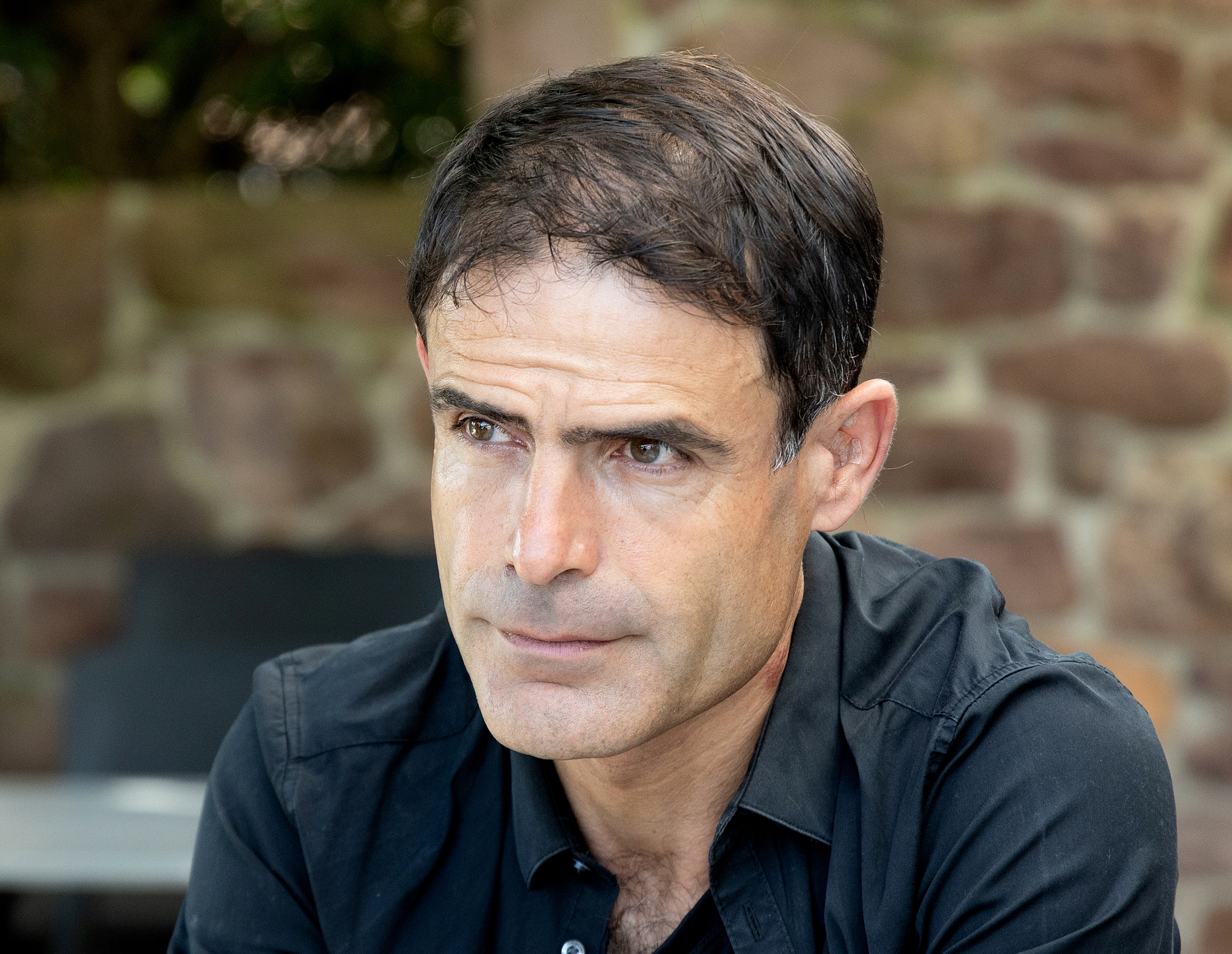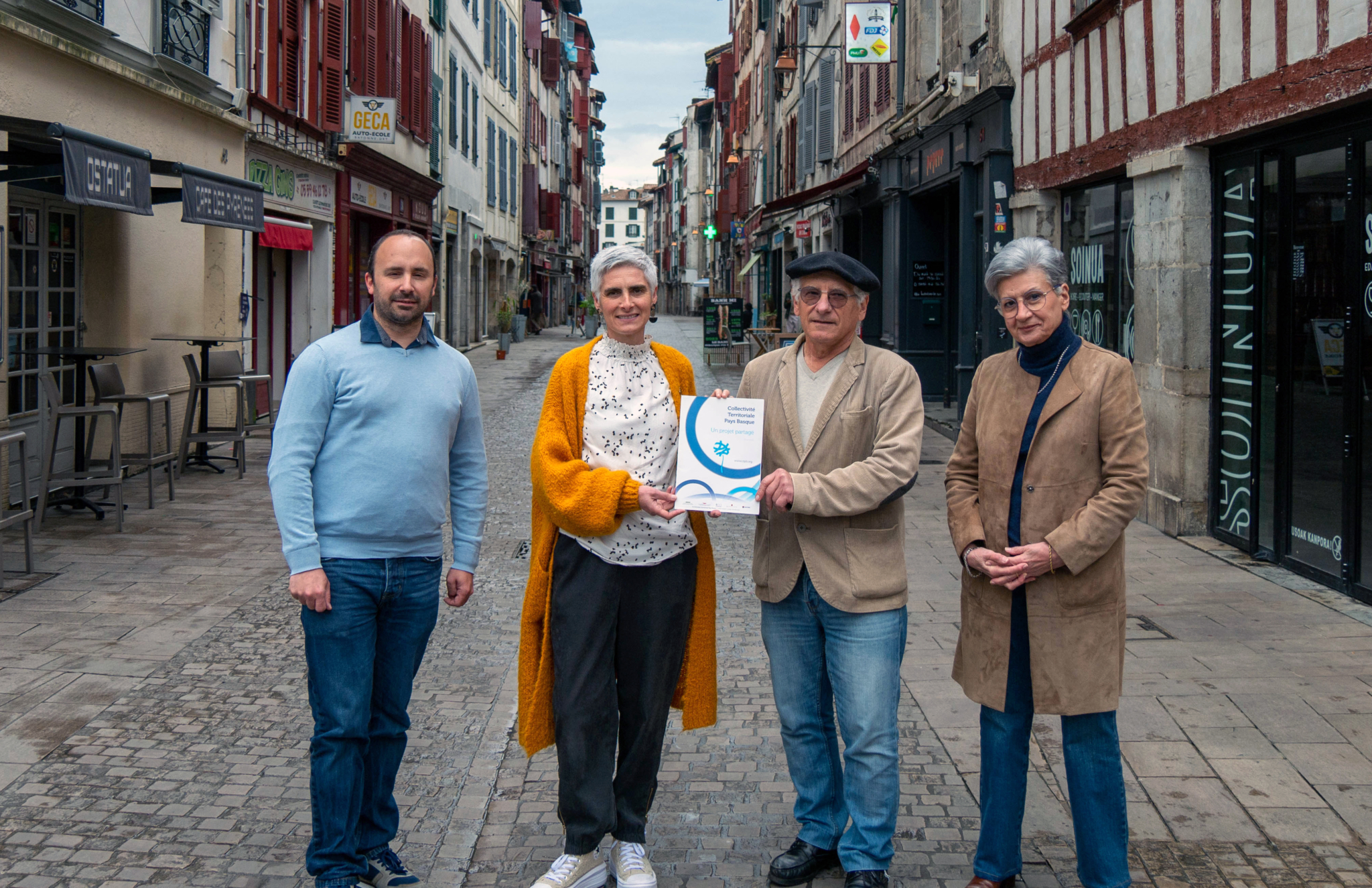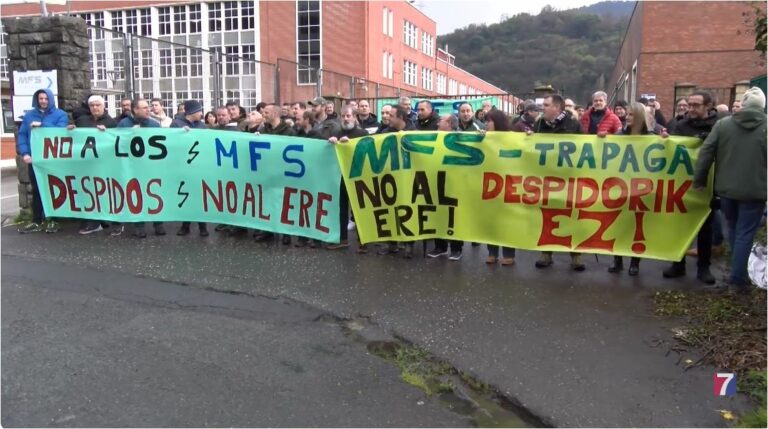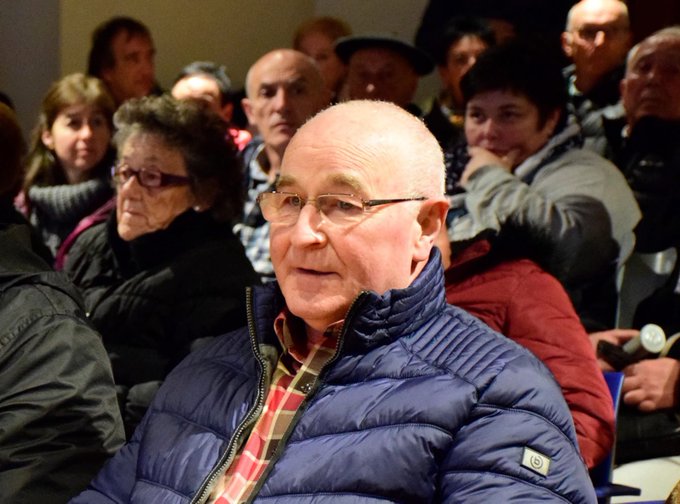"Young People Are Stone Guests in Front of Justice"
- Areta (Álava), 1972. The lawyer. The lawyer. He was charged in the case against the Pro-Amnesty Committees. Eight lawyers are currently in prison. He could be the ninth. He is the author of La maza y la cantera (The Hunchback). The book shows that the limit of guilt is very vague.
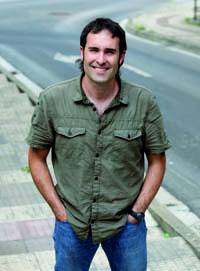
Where's the book The Maza and the Song?
The police caught me in a raid when I was young. I wasn't processed, but Padres asked me to fill out a file. Three years ago, the group was approached by Excavator the Left, who is also the author of the book, and by both. Parents suggested that we build a kind of solidarity collection around youth and repression. They came to the Observatory [Observatorio de Derechos Humanos] but the work has been personal. I am interested in learning about what has happened to young people over the past two decades. Aitziber collected the information and data and I read about them.
There is a tendency towards violence on the part of young people. What conclusions have you drawn from this activity?
We have made the following statement – each reader will draw conclusions – if there is violence on the part of young people. Historically there has been a clash between sectors of the people, in a word of conflict. This time he was on the street. The group’s Gavilan singer Kojon Prieto said, “Who has never thrown a stone at the police?” Violence is a resource for young people. Is it a crime to throw a stone? We also wanted to show the motive behind throwing the stone. Knowing that it can lead to repressive and criminal consequences, what motivates the young person to do so?
The stone refers in some way to the title of The Maza and the Song.
Silvio Rodríguez’s song starts from another meaning: “What’s going on without the maza singing?” she says. We want to say, “What would be action without argument?” We have also denounced the use of the term quarry against youth. The youth is also the quarry of the people, and their goals are the future of this country. What the young people propose will also mark the future of this country. Some have used the quarry as a pejorative term: “The one who starts throwing the stone ends up in ETA.” Director Cotino of the National Police: “Out of a hundred young people who throw stones – or Molotov cocktails – they go to pick up five guns,” he said. This is an argument that young people end up in ETA. The opposite argument can also be used: “The other 95 percent don’t pass.” This theory, at least quantitatively, is not valid. However, this dynamic has made it possible to criminalize youth. Any young rebel seemed to have a goal of getting into ETA, and has been treated as such. And not only that, those who have carried out public and legal activities have been included in the group of those who have thrown stones.
The state has used the phenomenon.
According to the Criminal Code, there is a criminal response for every illegal act. But the State does not look at it that way, the State considers it a socio-political phenomenon. The Spanish state uses American theories. For example, the so-called “broken window theory”. This is the following: “In the face of the first petty crime, we have to show the greatest strength to young people, otherwise they will commit more serious crimes over time.” Among other theories, “the law of the enemy, the law of the author, zero tolerance” have drawn the position of the State.
In our country, the core of this kind of revolution or subversion began to sprout in the early 1990s.
Oh, yeah, yeah. Then the riots between the police and the youth were in full swing, the fights are body to body, on the street. The police are the first protagonists. But later, come and tell me! They wanted to attract tourism. They wanted to show that this country is beautiful, but hiding the fact that there is a kind of revolution in the Basque Country, they wanted to tear the subversion off the street. Although the protagonist was the police, they gave an important place to the media powers and the courts. The National Court was later introduced. The law was changed and strengthened. All the components were united: legislative power, justice, the media and the police were combined and oiled with great speed to combat the political phenomenon of youth.
There would be tensions between the state.
If you analyze the facts on a case-by-case basis, it seems that there was improvisation, but taking the whole route there was a dynamic that goes in crescendo and accompaniment. Sometimes the media paved the way for the judges, and in others the politicians themselves contradicted themselves in the face of the phenomenon. Some of the measures taken by politicians seemed to be in favour of the “reinsertion” of young people, but in others the party leadership issued a request for the arrest of any young person: “It takes efficiency, not justice, because there is a hurry,” they said. There were also tensions in the National Court, some judges unequivocally described the acts as terrorist, while others said “we have to consider these crimes in a different way.” The National Court initially struggled to implement these mass measures, but the upward momentum prevailed and the crimes ended up being punished as terrorists.
The State considers these citizens and young people enemies of the State.
When the theory of the “right of the enemy” begins to apply, the citizen begins to become an enemy for the state, and even in the opposite sense, the citizen begins to think that the state is not democratic. The theme provides for a thesis. The relationship between the police and the youth has been very conflictive and, in a certain sense, treated exclusively in criminalistic terms. A sociologist could study how such an enmity or theme has developed. I am thinking, for example, of the case of Ander Susaeta.
This may be due to the proximity of the two sides.
Oh, yeah, yeah. There was proximity to the border and that was what rooted the feeling of hatred. Perhaps in Navarre the National Police – the Foral Police was dismissed later – was seen as a distant, stranger policeman. This distance also qualifies the feeling of hostility.
Has the clash between the state and youth been changing according to the parameter of the so-called conflict?
At least not in terms of torture. The first case of street riots was that of the Larrinaga brothers in 1992, when they were arrested together with David Garcia. They were subjected to terrible torture in Indautxu. Until then, only the ethnicists suffered torture. The jump was made. Again, in recent years, Segi members are denouncing torture, even without associating it with concrete acts of violence. It is difficult to compare the torture and methods of the time and the present, whether there is more or less. Can you make a line? In the case of torture, I wouldn’t.
Have there been any changes in the time of the truce?
In 2000 there was a huge leap in the penalties imposed by the courts. During the period of the Lizarra-Garazi Agreement, when the ETA ceasefire ends, a report from the National Court established the new internal dynamics of the court: “So far there have been doubts as to whether such acts constitute terrorism, but not from now on. We consider all cases to be terrorism, we will punish them as much as possible,” he says.
Would you make an assessment?
I remember the raid on Laudion in 1996—my brother Igor was inside. The court decided in the trial held during the truce that the Areta railway station had been burned in order to claim the sovereignty of the Basque Country. The young men were sentenced to 18 months. A few months later, others were sentenced to 12 years for the same acts. Valuation: young people are stone guests before the administration of justice subject to political circumstances.
Have the actions of ETA influenced the repressive response?
Without a doubt. As the conflict has become more and more intense, the abuses have become more and more intense. However, the State has opposed the youth in an attempt to respond to ETA’s actions.
Why have people turned their backs on the existence of torture?
If we come to a resolution of the conflict, we should consider why both sides have ignored the suffering of the other. It is true that, even if society knows that torture exists, it has often looked the other way, not from political perspectives, but because of the feelings extracted from the gut. Life has been ruined by a large part of society. It will take years to turn this around. But there is one thing that cannot be hidden: that torture exists. In various forums, the tortured are said to have been worth it. If they deserve it, where's the limit? Is there a proportionality between the response of the State and the actions of young people? This is an issue that should be addressed and clarified in the coming years.
To what extent has the State not sought such violence and/or clash?
According to some conspiracy theories, the State has encouraged the violent attitude of young people. I wouldn’t say so much, but it’s true, the State has managed to adapt the violence to this degree, it has felt comfortable. He has seen that he was supported by a large part of society. Even if he did the most disproportionate, he was understood. In other words, the court has not only tripled the sentence for these young people, but has also admitted that they would be tortured by the police. People have believed that young people have acted according to a manual and everything has been justified. People, with a sense of annoyance, have been willing to believe it, their patience has run out somewhere and the State has thought it would defeat the situation with a hard hand. This leads to an eternal state. But is it possible to get out of this vortex? Well, today people are trying to approach the situation in a different way. What's left behind, though, isn't sweet.
Bitxia da. Izan ere, honelako lan bat egitean ez dugu bakarrik gure barne-historia analizatzea bilatu, kanpotik nola ikusten gaituzten ere ezagutu nahi izan dugu. Badago ni neroni lan hau egitera bultzatu ninduen elementu bat, Martin Scheinin finlandiarraren dokumentua.
Martin Scheinin terrorismoaren aurkako borrokan giza eskubiderako errelatorea da. Espainiako Estatuan eta Euskal Herrian egon zenean gomendio bat eman zuen kale borroka fenomenoari buruz. Honela esan zuen: “Kale borroka eta terrorismoa parekatzen badituzu zigor kodearen ikuspegitik, alde batean daudenak bestera pasatzera bultzatzen ari zara”. Erantzun kriminologiko berdina ematen diozu fenomeno biei.
Hau da, kale borroka al da ETAren harrobia? Edo errepresioak bultzatu izan al ditu gazte batzuk –agian ETAn sartu nahi ez zutenak– ETAn sartzera? Nik hori esaten badut, batzuek astakeria galantatzat hartzen dute, baina errelatore batek pertzepzio hori baldin badauka, badago zer pentsa. Liburuan hori ere agertzen da, kanpotik begiratuta dagoen pertzepzioa da, oparitzen diguten ikuspegia. Martin Scheinin hona etortzea eta kale borrokaren fenomenoa aintzat hartzea, “terrorismoaren” aurkakoan dena ez dela baliagarria esatea, berebizikoa izan da niretzat.
Gurasoak-eko kideek bultzatutako lana da, eurek eskaini zizkiguten artxiboak. Duela hamabost bat urte hasi ziren eurak materiala biltzen eta pilatzen, ordenurik gabe. Materialaren egoera kaotikoa zen kasu batzuetan, errepikakorra. Hutsuneak zituen ere, baina guk hortik abiatu genuen azterketa. 1.700 fitxa atera genuen, gazteen inguruko kasuak, kale borrokaren edo antzeko akusazioetan auzipetuak. Badira ere atxilotuak egon gabe, auzietan prozesatuak izan direnak. Prentsara –edota hemerotekara oro har– jo izan dugu ere halabeharrez. Abokatuen txostenak eta lanak orraztu ditugu bestalde.
Aberri Eguna elkarrekin ospatzeko xedez sortu zen Euskal Herria Batera plataforma. Aurten, ikusgarri bat eskainiko dute apirilaren 11n, Manex Fuchs antzerkilariaren, Lorea Agirre idazlearen eta Martxel Rodriguez dantzariaren eskutik.











